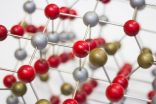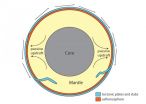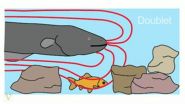This research comes as youth employment in the summer months, when teenagers are most likely to work, is near a 60-year low. The challenges facing minority and low-income youth are particularly stark; the 2010 employment rate for low-income black teens in Illinois was less than one-fourth the rate for higher-income white teens: 9 percent vs. 39 percent.
Study author Sara Heller, (PhD '13), Assistant Professor of Criminology at the University of Pennsylvania, noted that acts of violence kill almost 150 people daily in the United States, and injure more than 6,000 - a level the Centers for Disease Control and Prevention call a public health crisis. Youth (ages 10-24) are twice as likely as adults to be victims or perpetrators of violence, and the problem is concentrated among disadvantaged minority youth. Joblessness has been identified by experts as one of the major causes of these racial violence disparities.
The new study evaluated the impact of Chicago's One Summer Plus program, which offers eight weeks of part-time summer employment at Illinois minimum wage ($8.25/hour) and an adult job mentor to help youth manage barriers to employment.
"There are opposing pieces of conventional wisdom on whether a program like this would work," said Heller, who started the research while a doctoral fellow at the Crime Lab. "On one hand is the popular idea that 'nothing stops a bullet like a job.' On the other is a body of research on employment programs suggesting that only intensive and lengthy interventions can improve outcomes among disadvantaged youth - that one summer could never be enough."
To find out the answer, the study randomly assigned 1,634 students from 13 high-violence Chicago neighborhoods to one of three groups: summer jobs, summer jobs plus a social-emotional learning component, or a control group that did not participate in the interventions. Slots were limited by the available funding. Youth in the jobs-only group were offered 25 hours per week of paid employment. Youth in the job plus social-emotional learning group were paid for 15 hours of work and 10 hours of social-emotional learning that is based on cognitive behavioral therapy principles. The goal is to help youth understand and manage thoughts, emotions, and behavior that might interfere with employment. The remaining youth were not offered jobs through One Summer Plus, though they were free to pursue other jobs or summer activities provided by the city or local nonprofits.
Study participants were on average 16 years old and almost all were African-American. More than 90 percent were eligible for free or reduced price lunches (indicating a level of family poverty), and the students had about a C average in school. About 20 percent had been arrested and about 20 percent had been victims of a crime by the start of the study. They lived in neighborhoods with unemployment rates of 19 percent and very high violent crime rates.
The youth were assigned a variety of jobs, including camp counselors, community garden workers, and office assistants for aldermen. They were also given job mentors - adults who helped them learn how to be successful employees and to navigate barriers to employment.
Both the jobs and the jobs plus social-emotional learning were equally effective in reducing violent crime arrests by about 43 percent compared to the control group.
"The City of Chicago was courageous enough to put its One Summer Plus program to the test, and turns out that just eight weeks of summer programming decreases violent crime arrests - by a huge amount - for over a year after the job ends," said Heller. "This is an incredibly encouraging finding."
Heller noted that the decline occurred largely after the 8-week summer job program ended, indicating that the program did not just keep youth busier over the summer; it changed their behavior after the job had ended as well.
Previous youth employment programs have targeted young adults who have dropped out of school and are struggling to find jobs. But intervening before the students drop out of school and helping them develop skills needed to be successful on the job, like impulse control and decision-making, might do more with less by focusing on prevention rather than remediation.
The results of this study show that when an intervention like this one is offered to students while they're still in school, it does not have to be lengthy or costly to change behavior. This is welcome news to Evelyn Diaz (SSA, AM '98), the Commissioner of the Chicago Department of Family & Support Services. "Mayor Emanuel is deeply committed to making investments to keep our city's youth safe, and the results we see from Chicago's One Summer Plus program demonstrate that these investments are having real, positive impacts on the lives of individual youth. I could not be more thrilled to be working with Professor Heller and her colleagues at the University of Chicago Crime Lab to generate the evidence that Chicago needs to ensure we are doing as much social good as possible with every public dollar entrusted to us," said Diaz.
For the Crime Lab researchers, this is another example of the power of using scientific evidence to inform programs and policy. "Violent crime is incredibly regressive in its impact - it takes the greatest toll on society's most vulnerable," said Roseanna Ander, Executive Director of the Crime Lab. "There is far too little policy and research attention as well as precious few resources focused on adolescents, especially those from disadvantaged neighborhoods who are really struggling. The One Summer Plus evaluation builds on other encouraging recent study findings including those carried out by the Crime Lab that suggest it's not too late to help young people, even those who face serious challenges and come from disadvantaged backgrounds. But to be successful in helping these youth, we need to use data and evidence to really understand the key challenges they are facing, and to determine what the most effective intervention strategies are."
The release of the study in one of the world's leading scientific journals shows how much benefit can come from partnerships between researchers and practitioners. As Ander points out, "these new findings benefit not only Chicago, but every other city struggling to improve life outcomes for disadvantaged youth."
INFORMATION:


